Boeing capsule has returned to Earth without stranded astronauts
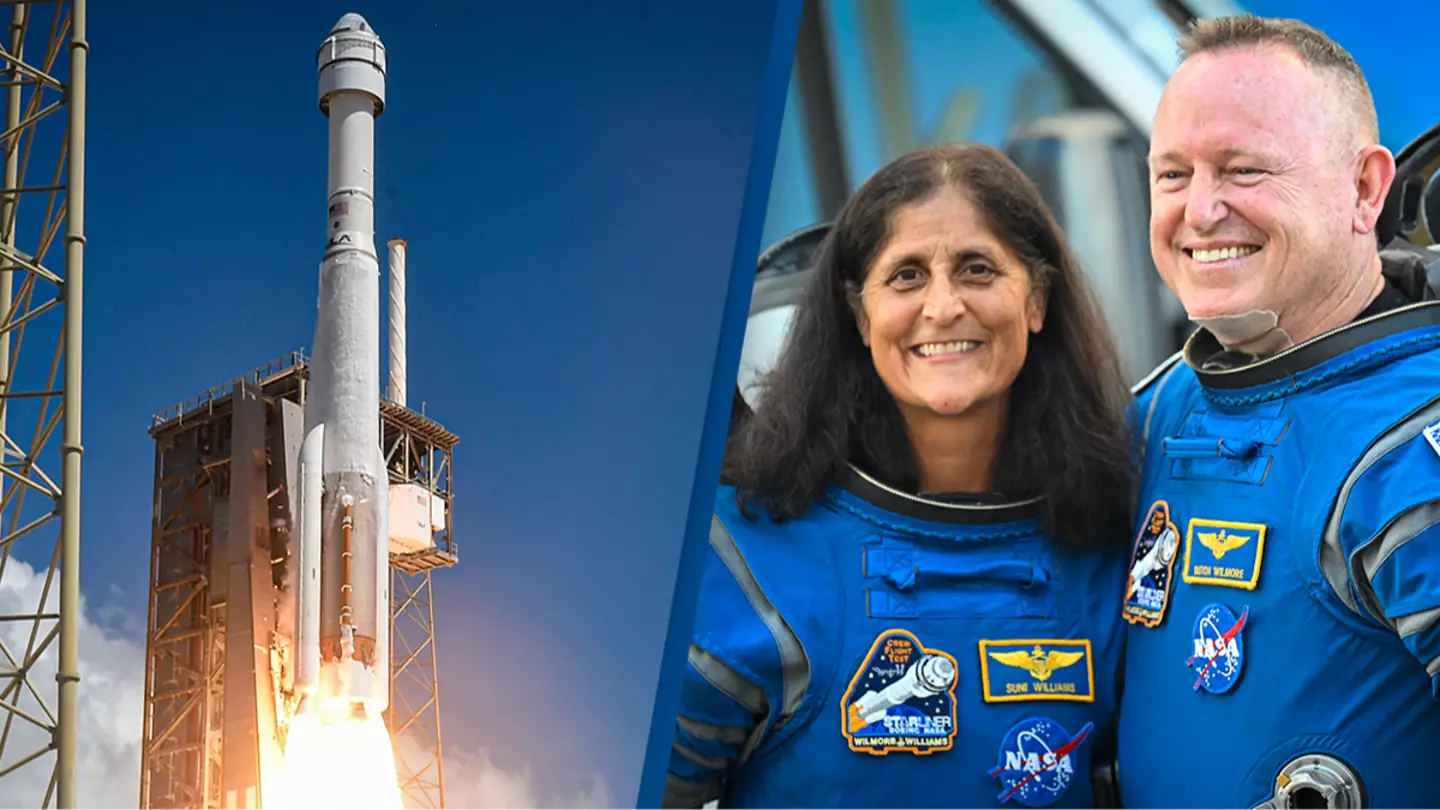
The Boeing capsule has departed for Earth and is set to touch down in the New Mexico desert, leaving two astronauts behind
The Boeing capsule has begun its descent back to Earth from the International Space Station (ISS), leaving two astronauts stranded.
The capsule had previously ferried the two astronauts up to the ISS for a routine stay on the station.
Soyuz MS-24 returns to Earth from International Space Station
Credit: X/ @Space_Station
0 seconds of 2 minutes, 12 secondsVolume 90%
Technical issues with the capsule meant that it would not be safe for astronauts Suni Williams and Butch Wilmore to use it to make their scheduled return.
Now the pair will have to wait until February 2025 for the arrival of a SpaceX Dragon capsule to ferry them back to Earth.
While the Boeing Starliner capsule was not deemed safe to transport humans, it will be able to depart back to Earth without any passengers on board.
One of NASA's policies includes having a duplicate of space-going vehicles on earth.
This makes sure that the agency has a vehicle that it can study in the event that something goes wrong with a craft in flight.
The craft has now set off from the ISS and will make a journey of around six hours.
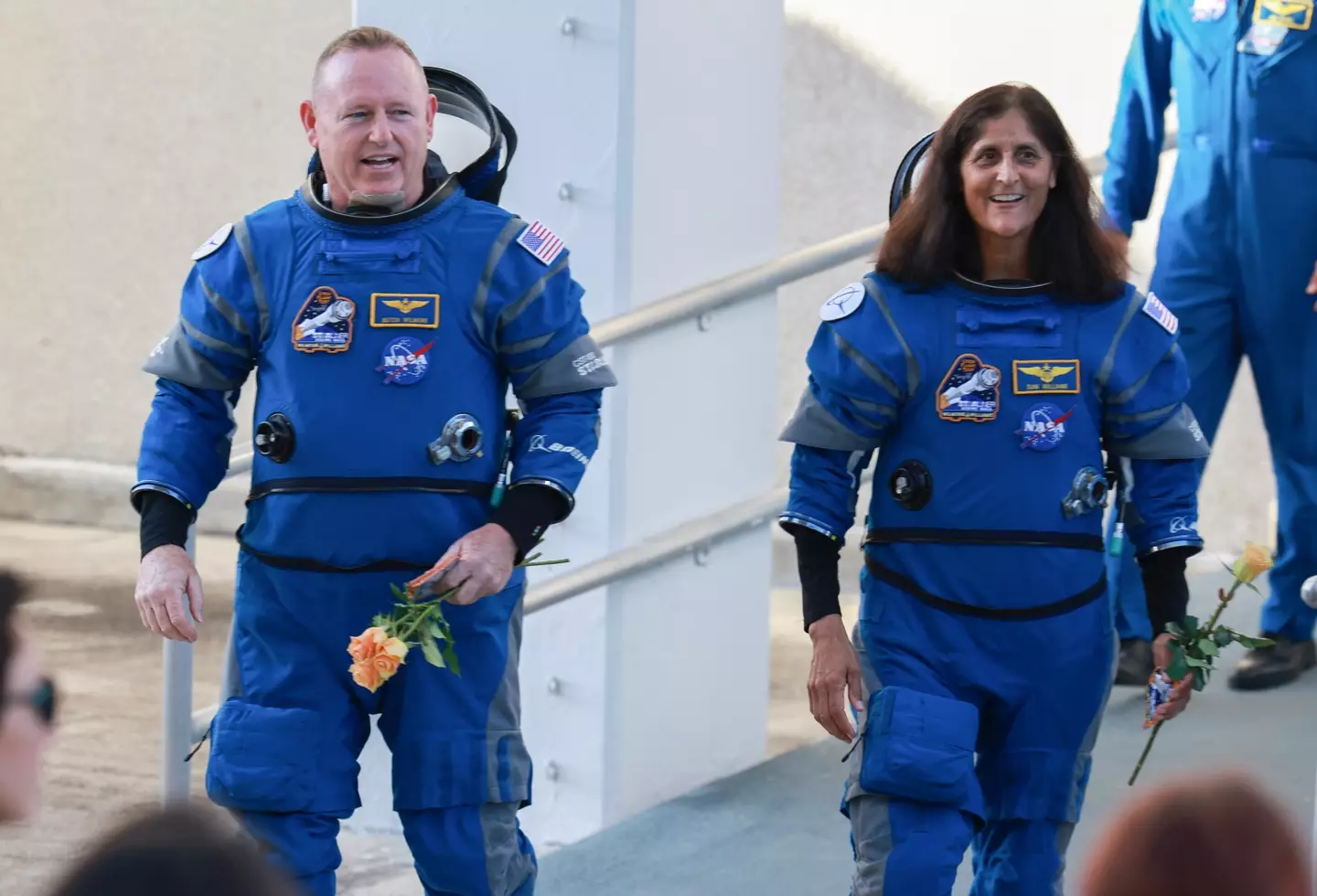 Suni Williams and Butch Wilmore are spending longer on the ISS than expected (Joe Raedle/Getty Images)
Suni Williams and Butch Wilmore are spending longer on the ISS than expected (Joe Raedle/Getty Images)
It is expected that the Starliner capsule will touch down in the desert in New Mexico.
Astronaut Suni Williams wished the spacecraft good luck as it set off home, saying: "Bring her back to Earth. Good luck."
The two astronauts had a hair-raising arrival on the space station when thrusters on the craft failed and helium leaked from tanks on board.
This meant that what was supposed to be an eight day mission to the space station instead turned into one lasting eight months.
Fortunately, there is more than enough to keep the astronauts safe during their stay there.
Not only that, but Williams' mom even said the astronaut was thrilled to be able to spend more time in orbit.
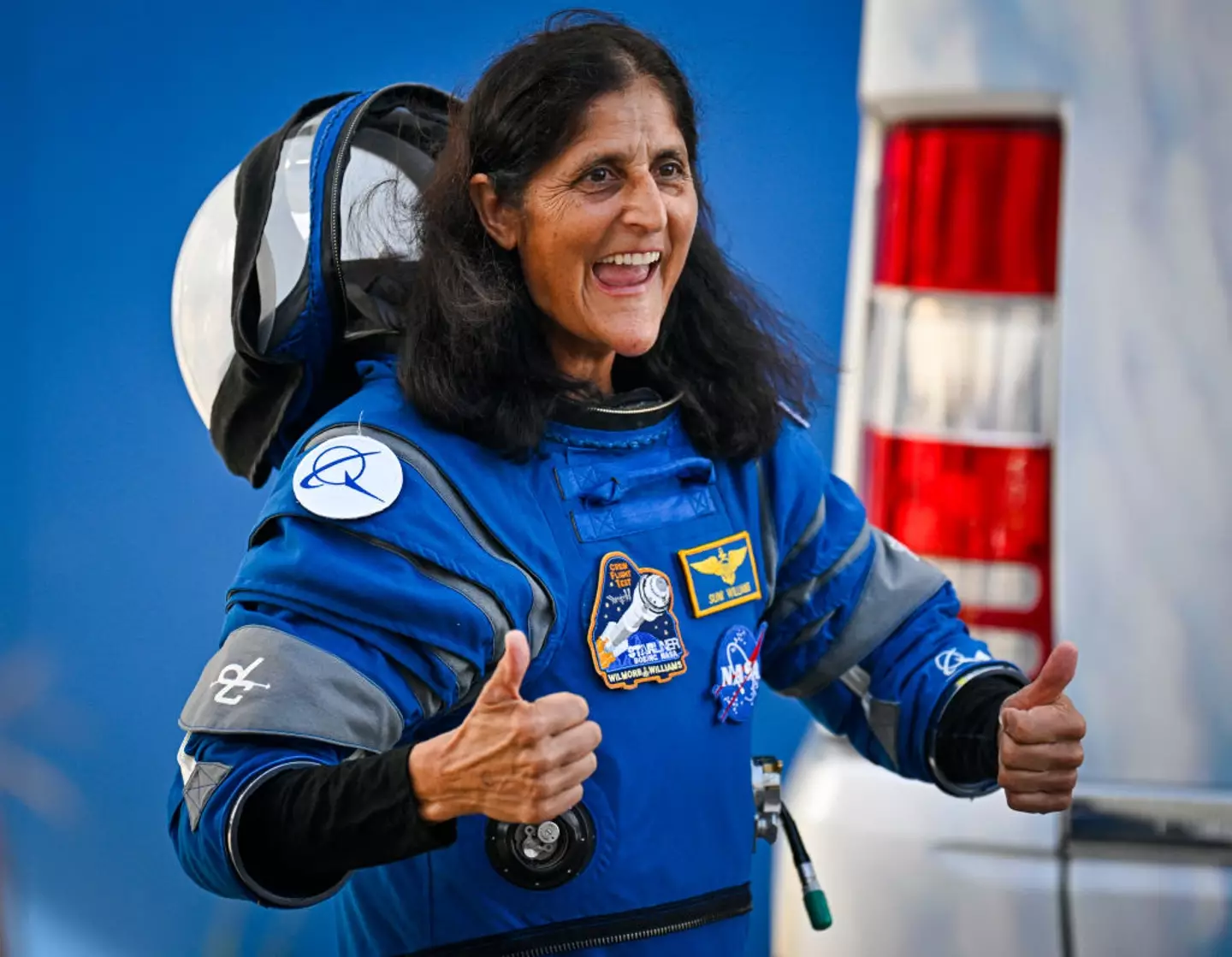 Williams was reportedly thrilled to have the chance to spend more time in space (MIGUEL J. RODRIGUEZ CARRILLO/AFP via Getty Images)
Williams was reportedly thrilled to have the chance to spend more time in space (MIGUEL J. RODRIGUEZ CARRILLO/AFP via Getty Images)
Speaking to Newsnation's CUOMO, Bonnie Pandya said: "Everything's going to be fine. I don't give her any advice. She knows what to do. She is a seasoned astronaut. She's been up over 400 days in space. So, you know, they have things to do. They have jobs to do. They have experiments."
Bonnie added: "She told me not to worry about her. Everything's going to be fine.
"I've been an astronaut mom for 20 years. And this is her third flight. Even though it was, you know, it has a problem, we still don't feel that there's a big problem."
SpaceX is now set to launch a crew ferry flight carrying two further astronauts to the ISS.
They will then work for two months on the space station before returning to Earth, taking Williams and Wilmore with them.Featured Image Credit: MIGUEL J. RODRIGUEZ CARRILLO/AFP via Getty Images
Topics: News, World News, US News, International Space Station, Space, NASA, Space X
Astronauts stuck in space after Boeing capsule malfunctioned could be stranded until 2025
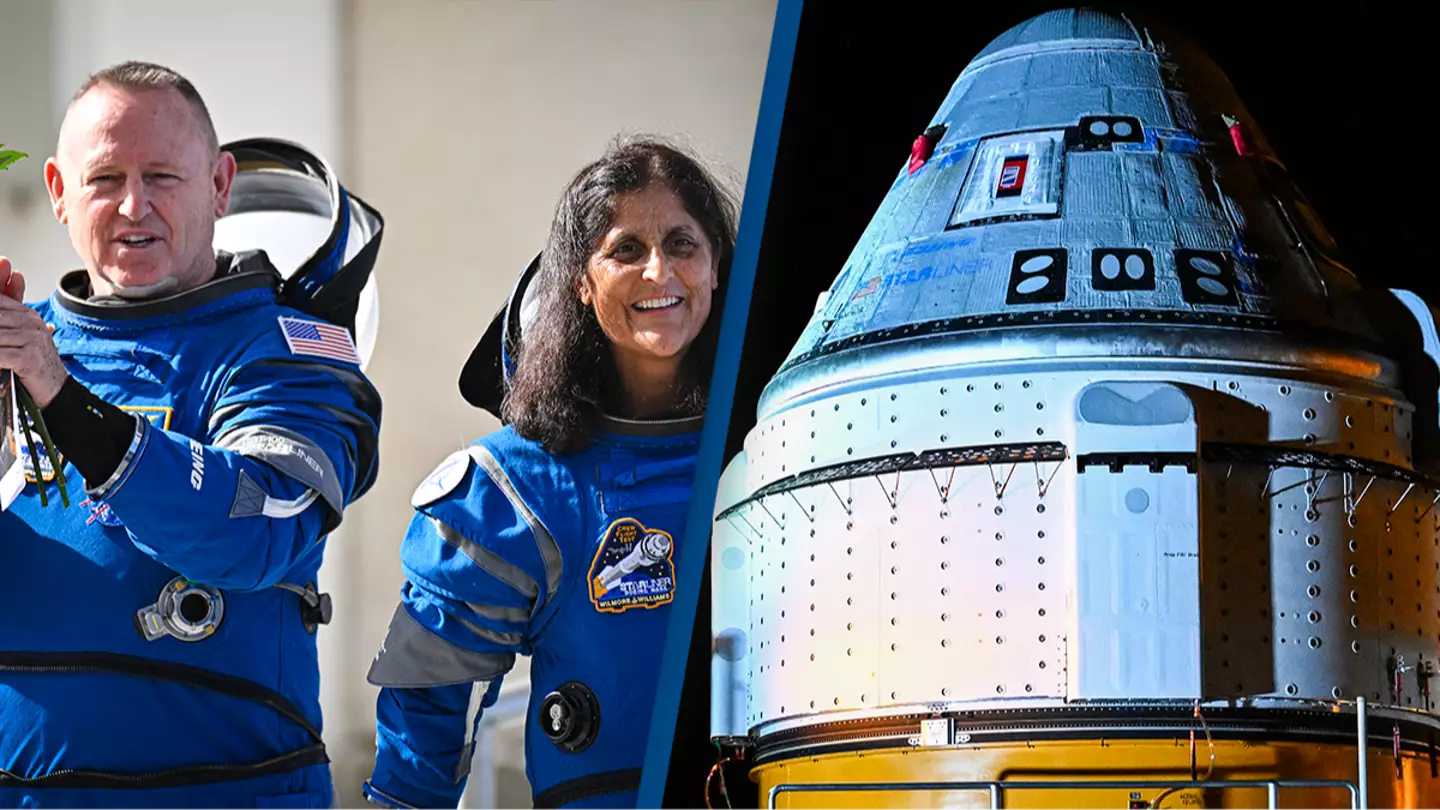
The two astronauts were initially supposed to be in space for eight days - it may now be seven-months
Two astronauts trapped in space may be stranded until 2025.
It sounds like the synopsis of Hollywood blockbuster The Martian, but unfortunately for NASA's Barry Wilmore and Suni Williams, there are no cuts - it is very much real life.
.webp) NASA astronauts Barry Wilmore and Suni Williams have faced multiple malfunctions in their Boeing's Starliner capsule. (NASA)
NASA astronauts Barry Wilmore and Suni Williams have faced multiple malfunctions in their Boeing's Starliner capsule. (NASA)
The couple were launched into space aboard the Boeing Starliner on June 5, and what was only supposed to be an eight day mission could turn into a seven-month nightmare.
Yes, they left the International Space Station (ISS) more than 60 days ago, and since then the crew has discovered worrying helium leaks and thruster failures.
Worrying to say the least - the capsule that they are in has experienced five helium leaks, five maneuvering thrusters go dead and a propellant valve fail to close completely.
Initially, it was feared that 61-year-old Wilmore and 58-year-old Williams only had at most 72 days to survive, but now it is understood that they could be trapped in out of this planet until 2025.
.webp) Despite the barrage of malfunctions, NASA is confident Williams and Wilmore will return home. (NASA)
Despite the barrage of malfunctions, NASA is confident Williams and Wilmore will return home. (NASA)
Steve Stich, NASA’s Commercial Crew Program manager, has explained that if tests prove too risky to make the trip home on Starliner, they may be forced to return with SpaceX's Crew-9 return flight.
However, this wouldn't be ready until February.
Stich said: “We have been working with SpaceX to ensure they are ready to respond with Crew-9 as a contingency.
“We need to probably decide, likely in the middle of August, one path or the other to go ahead and meet the launch date for Crew-9."
SpaceX's mission was initially penned for take off on August 18, but delays mean it should now take off September 24.
“We have not formally committed to this path, but we wanted to ensure we had all that flexibility in place,” Stich said.
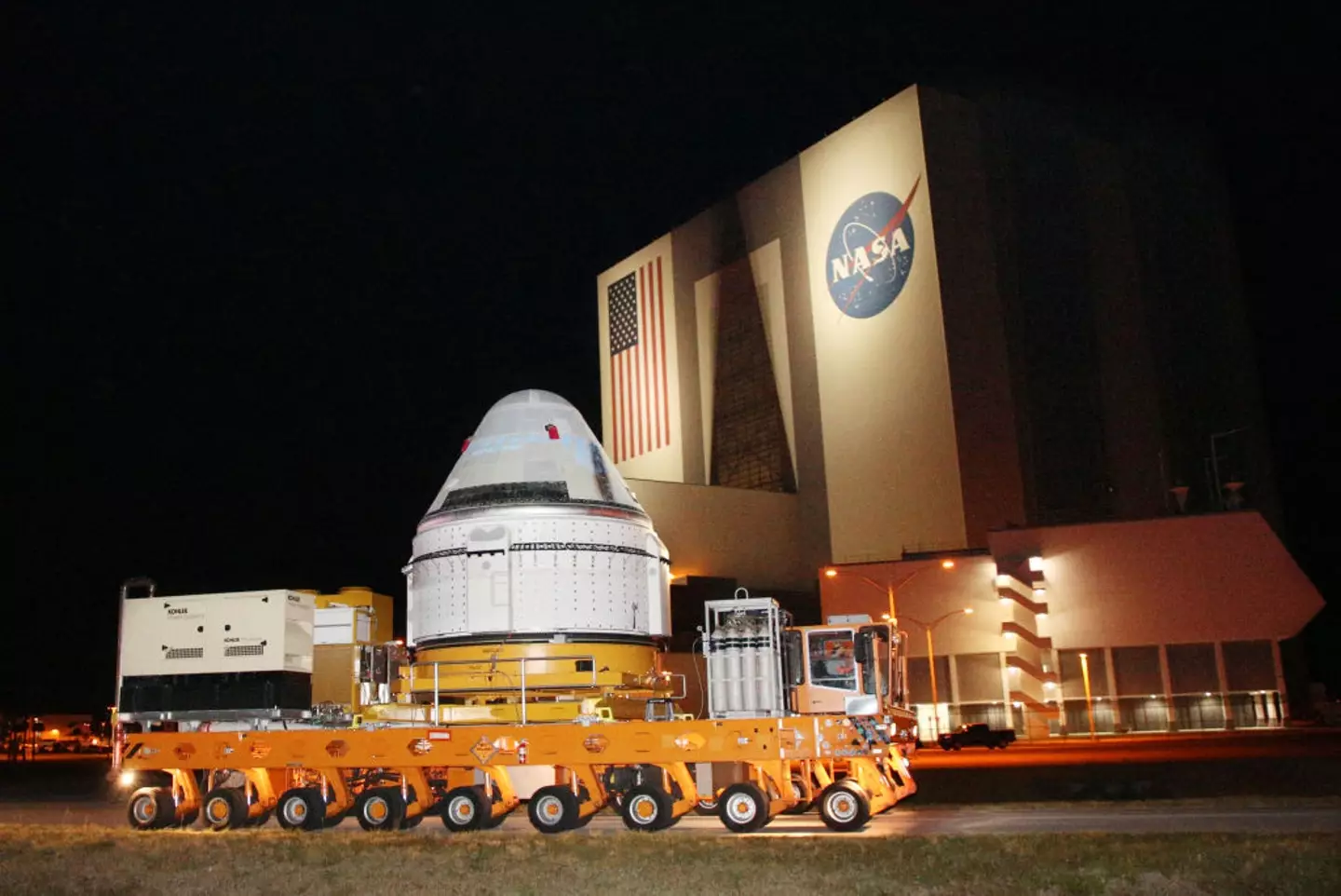 The Boeing CST-100 Staliner which Wilmore and Williams are trapped in space inside. (Gregg Newton / Gregg Newton / AFP) (Photo by GREGG NEWTON/Gregg Newton/AFP via Getty Images)
The Boeing CST-100 Staliner which Wilmore and Williams are trapped in space inside. (Gregg Newton / Gregg Newton / AFP) (Photo by GREGG NEWTON/Gregg Newton/AFP via Getty Images)
NASA's engineers are currently testing spare thrusters in the New Mexico desert to try and understand what went wrong with the Starliner ahead of its docking.
Of the five thrusters that failed as it approached the space station on June 6, four have since been reactivated.
This was Boeing's first ever test flight with a crew aboard.
The initial demo in 2019, which flew empty, never made it to the space station because of bad software.
They repeated the test in 2022, however, more issues arose.
The space agency's competitor, billionaire Tesla owner Elon Musk's SpaceX, could well have to get Wilmore and Williams out of this sticky situation next year.Featured Image Credit: MIGUEL J. RODRIGUEZ CARRILLO/AFP/CHANDAN KHANNA/Getty Images
Topics: Space, NASA, International Space Station, Space X, Science
NASA identifies mystery sound after stranded astronaut shared concerns over ‘strange noise’ on spacecraft
.png)
NASA astronaut Butch Wilmore reported a 'strange noise' coming from onboard the Starliner spacecraft to Mission Control
NASA has revealed what caused the 'pulsing noise' from a speaker onboard the Starliner spacecraft.
On Saturday (August 31), NASA's Mission Control at Johnson Space Center in Houston received a radio call from astronaut Butch Wilmore, who reported a 'strange noise' coming from a speaker inside the Starliner spacecraft.
NASA astronauts could remain in space for 8 months
Credit: NBC News
0 seconds of 1 minute, 48 secondsVolume 90%
Wilmore had arrived at the International Space Station via the Boeing Starliner Crew Flight Test on June 6 - where he and fellow astronaut, Suni Williams, will now remain until February 2025 as a result of the capsule malfunctioning.
However, while settling in for his longer than planned stay in space, Wilmore reported hearing something weird.
An audio recording of his radio call into Mission Control revealed the astronaut asking to be connected to Starliner to try and figure out the source of a 'strange noise'. And while the team back on earth were unable to listen into the spacecraft, Wilmore managed to share the sound - described by Mission Control as 'like a pulsing noise, almost like a sonar ping'.
Wilmore asked Mission Control to look into the noise and let him know once they'd figured out what it was and NASA's Commercial Crew has since released a statement on social media having since identified what it was.
Taking to Twitter on September 2, NASA Commercial Crew updated the 'pulsing sound from a speaker in Boeing's Starliner spacecraft heard by NASA astronaut Butch Wilmore aboard the International Space Station has stopped'.
It continued: "The feedback from the speaker was the result of an audio configuration between the space station and Starliner.
"The space station audio system is complex, allowing multiple spacecraft and modules to be interconnected, and it is common to experience noise and feedback."
NASA added if any member of crew hears 'sounds originating in the comm system' they're 'asked to contact mission control'.
It reassured: "The speaker feedback Wilmore reported has no technical impact to the crew, Starliner, or station operations, including Starliner’s uncrewed undocking from the station no earlier than Friday, Sept. 6."
Indeed, Starliner is expected to undock from the space station on September 6 to begin its journey home to earth, landing at White Sands Space Harbor in New Mexico.
Wilmore and Williams will no longer be onboard the spacecraft like originally planned as a result of it experiencing 'helium leaks' and 'issues with the spacecraft reaction control thrusters' when approaching the orbiting laboratory at the space station on June 6, NASA reports.
The two astronauts will subsequently remain at the station until February 2025 when they'll return to earth aboard the SpaceX Dragon spacecraft with two other crew members assigned to NASA’s SpaceX Crew-9 mission.Featured Image Credit: NASA
NASA explain why Earth is 'bleeding' after astronauts capture images
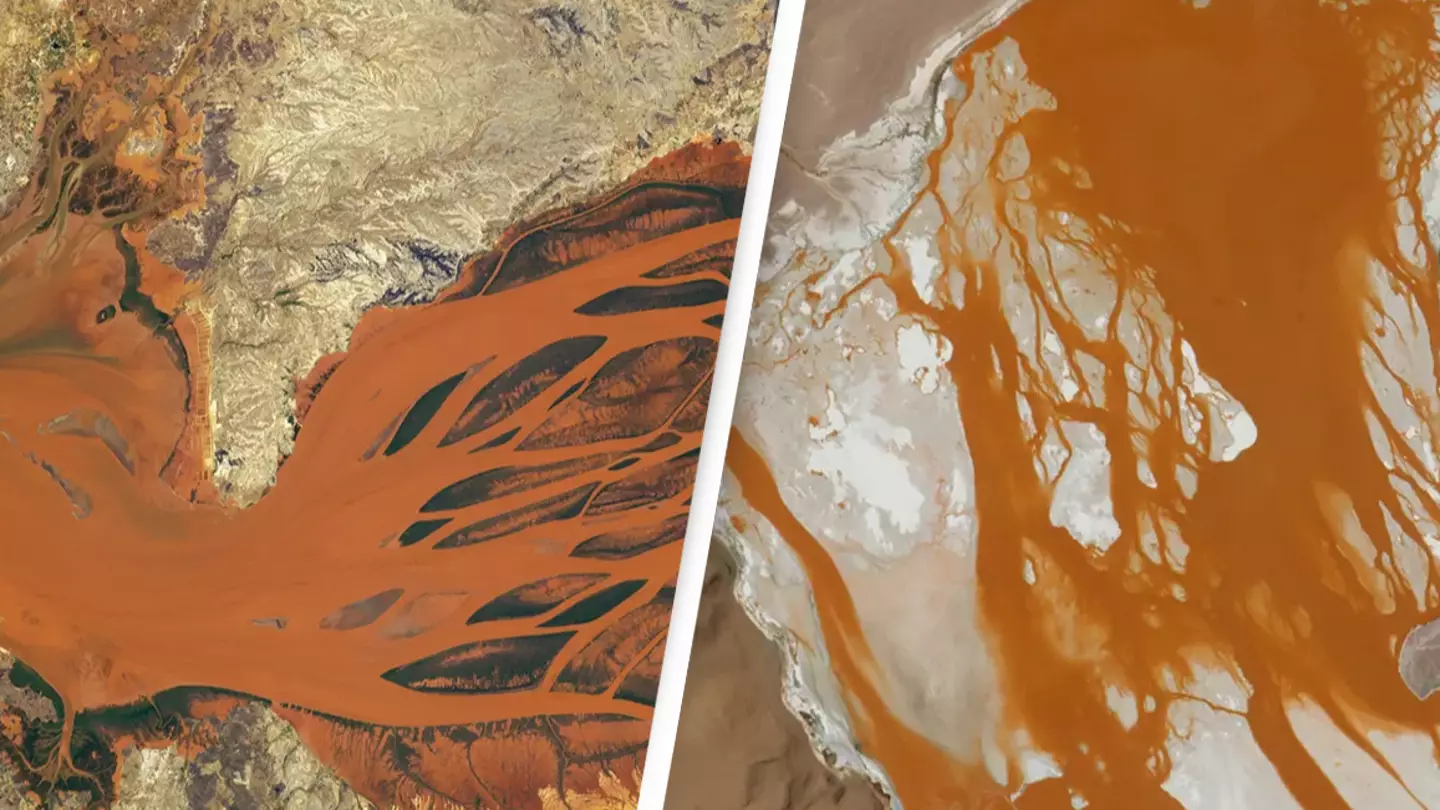
Crew members of the International Space Station captured the Earth leaking a gory red substance
The chance to observe Earth from above is something that only a minuscule selection of human beings will ever be lucky enough to tick off their bucket lists.
However, astronauts residing in the International Space Station (ISS) got a bit of a shock when looking down on our planet and noticed it expelling a gory red substance.
NASA share image of 'hand of god'
Credit: YouTube/Chandra X-ray Observatory
0 seconds of 45 secondsVolume 90%
Despite the eerie image, NASA have insisted that there's no cause for concern, and that the Earth is certainly not 'bleeding'.
In fact, there is an explanation for the planet oozing this flaming blood orange liquid.
Using a Nikon D5 digital camera, a member of the Expedition 69 crew captured the seemingly leaking liquid, which was located in the Bolivian Andes in South America on 7 September.
They soon realised, however, that the red liquid was actually the Laguna Colorada - a shallow salt lake in the Eduardo Avaroa Andean Fauna National Reserve.
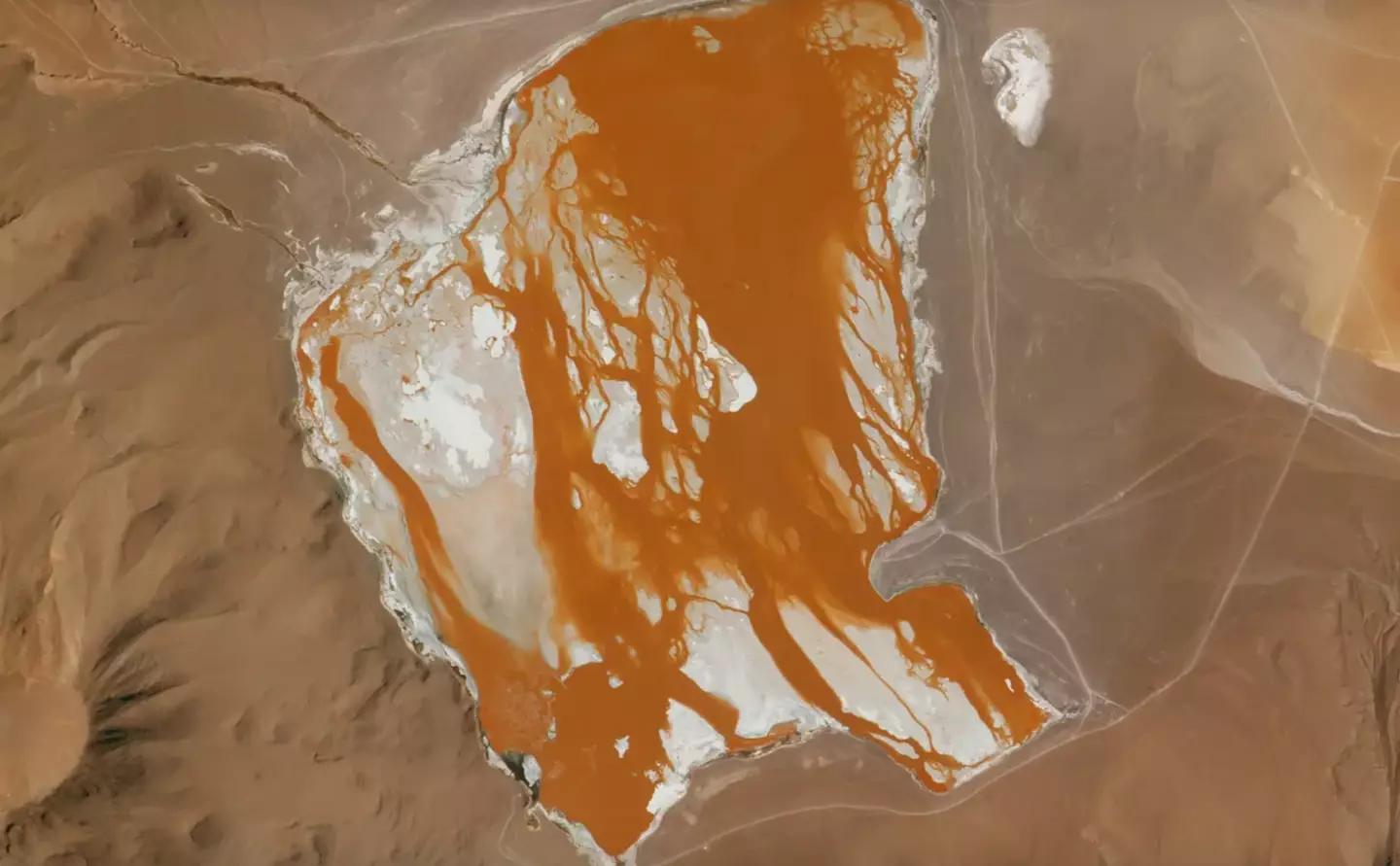 ISS/NASA
ISS/NASA
But what they were seeing wasn't the Earth's equivalent to the elevator doors opening in The Shining, but rather rusty brown tint to the water caused by red algae which had been booming in the hyper-salty waters - optimal environmental conditions for the plant.
And this isn't the first time this phenomenon has been seen before, with a similar occurrence being observed in the world-famous Great Salt Lake in Utah and in Lake Aralsor in Kazakhstan.
In all of these instances, the growth of red algae is influenced by 'a combination of light intensity, salt content, pH levels, and temperature'.
And just three weeks after their initial discover, Expedition 70 crew spotted another colossal puddle of red, located just off the coast of east Africa.
This time, crew members realised that they'd photographed the Betsiboka River Delta in Madagascar - throwing cold water on their initial fears.
 ISS/NASA
ISS/NASA
But despite the waters looking as red as those of Bolivia in the weeks prior, they realised that this color was caused by a different process - with the river instead running red due to iron-rich sediment in its waters.
This can clog waterways in the water's estuaries and -in some cases - can even form new islands.
This type of sediment also impacts the colour of the Jacui River in southern Brazil.
However, despite the red hue, scientists said that these bodies of water are ideal for biodiversity.
"Algae and other microorganisms serve as a vital food source for vulnerable bird species, such as the Andean flamingo in the Laguna Colorada." NASA's Earth Observatory said.
"Within the Betisboka River Delta, the estuary provides food, such as seagrasses, to the endangered green turtle and vulnerable dugong, or sea cow."
Bloody brilliant.Featured Image Credit: ISS/NASA
Impact 240 days in space could have on ‘stranded’ astronauts' bodies
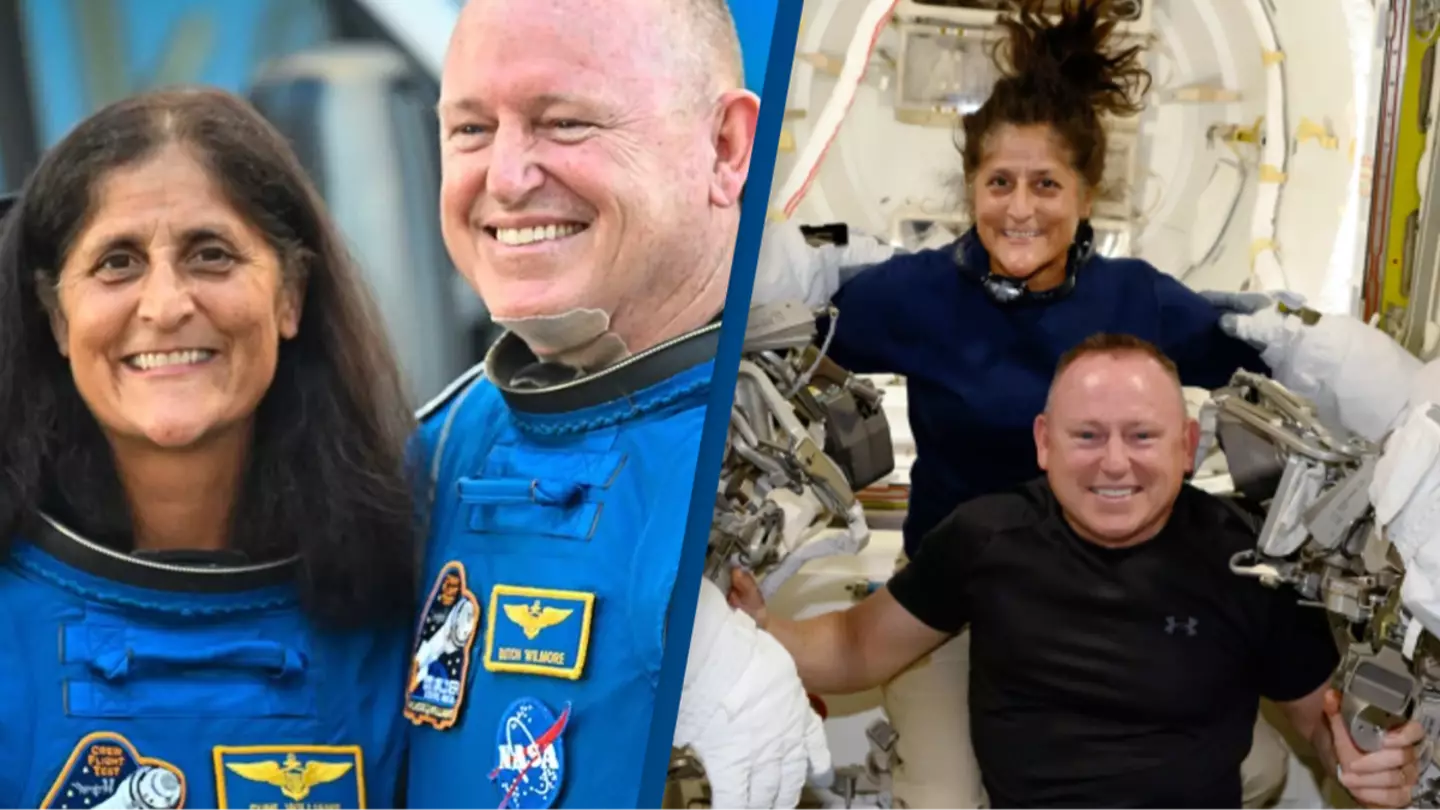
Sunita Williams and Butch Wilmore have been stuck in space for over two months
The two astronauts that have been left 'stranded' in space could endure a series of physiological affects from being in orbit for a prolonged period of time.
Sunita Williams and Butch Wilmore left Earth for the International Space Station (ISS) on June 5 and, while the pair were only supposed to be there for eight days, it's predicted that they'll be there for eight months instead.
Their extended stay comes after the crew discovered worrying helium leaks and thruster failures, making it too risky for the pair to return home in the Boeing capsule as originally planned.
NASA astronauts could remain in space for 8 months
Credit: NBC News
0 seconds of 1 minute, 48 secondsVolume 90%
It's now expected that Williams and Wilmore will return to Earth with SpaceX's Crew-9 return flight in February 2025.
They may return sooner if they're able to repair the Boeing Starliner, however.
While NASA have said that the duo are 'doing great' in an update issued on August 15, Williams and Wilmore could find that their physiology is impacted after being stuck in space for so long.
Muscle mass
After just a two-week space flight, a person can lose 20 percent of their muscle mass. On longer missions spanning to up six months, this percentage can increase to 30, as per a 2009 study titled: 'Acclimation during space flight: effects on human physiology'.
The most affected are postural muscles (such as back, neck, calves and quadriceps) as they're not being used to keep the body upright in a gravitational environment, i.e on Earth.
 Sunita Williams and Butch Wilmore's mission was only supposed to be eight days. (MIGUEL J. RODRIGUEZ CARRILLO/AFP via Getty Images)
Sunita Williams and Butch Wilmore's mission was only supposed to be eight days. (MIGUEL J. RODRIGUEZ CARRILLO/AFP via Getty Images)
Lead of Life Sciences at the European Space Agency, Angelique Van Ombergen, explained in a YouTube clip: "When astronauts spend several months in space, they can lose up to 20% of their muscle mass, and also their bone density decreases.
"Since the whole body is exposed to microgravity, the heart doesn't need to pump around as much blood as it used to on Earth and the cardiovascular system deteriorates."
Motion sickness
Astronauts are known to suffer something known as neurovestibular acclimation while in space - a term used to describe the neurological disturbances that astronauts experience during space flight due to microgravity.
This typically effects them during the first couple of days into their space flight, as well as when they readjust to Earth's gravitational pull when they return home, according to the 2009 study.
Symptoms of this 'sickness' include: facial pallor, cold sweating, stomach awareness, nausea and, in some cases, vomiting.
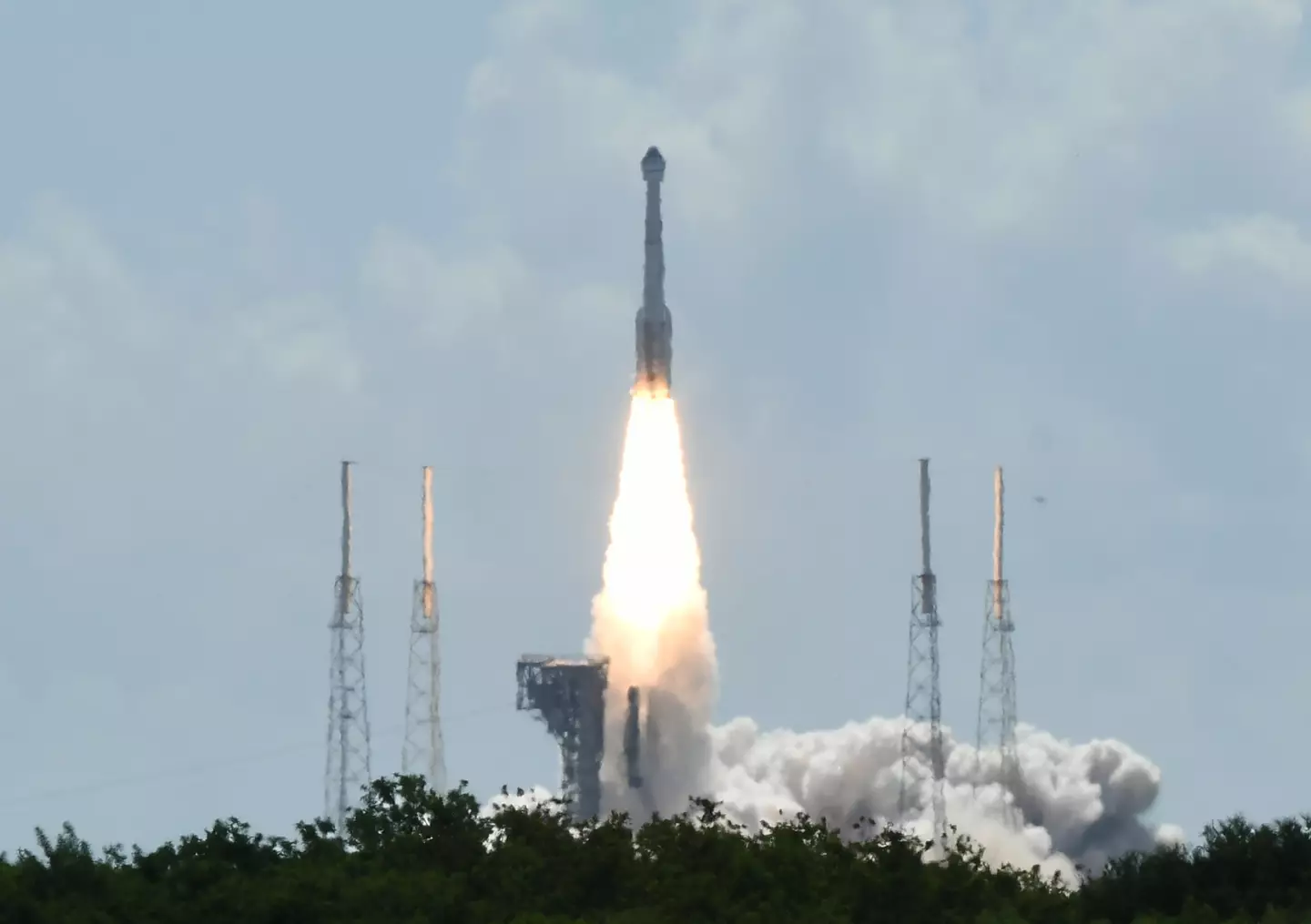

The Boeing capsule has departed for Earth and is set to touch down in the New Mexico desert, leaving two astronauts behind
The Boeing capsule has begun its descent back to Earth from the International Space Station (ISS), leaving two astronauts stranded.
The capsule had previously ferried the two astronauts up to the ISS for a routine stay on the station.
Soyuz MS-24 returns to Earth from International Space Station
Credit: X/ @Space_Station
0 seconds of 2 minutes, 12 secondsVolume 90%
Technical issues with the capsule meant that it would not be safe for astronauts Suni Williams and Butch Wilmore to use it to make their scheduled return.
Now the pair will have to wait until February 2025 for the arrival of a SpaceX Dragon capsule to ferry them back to Earth.
While the Boeing Starliner capsule was not deemed safe to transport humans, it will be able to depart back to Earth without any passengers on board.
One of NASA's policies includes having a duplicate of space-going vehicles on earth.
This makes sure that the agency has a vehicle that it can study in the event that something goes wrong with a craft in flight.
The craft has now set off from the ISS and will make a journey of around six hours.
 Suni Williams and Butch Wilmore are spending longer on the ISS than expected (Joe Raedle/Getty Images)
Suni Williams and Butch Wilmore are spending longer on the ISS than expected (Joe Raedle/Getty Images)It is expected that the Starliner capsule will touch down in the desert in New Mexico.
Astronaut Suni Williams wished the spacecraft good luck as it set off home, saying: "Bring her back to Earth. Good luck."
The two astronauts had a hair-raising arrival on the space station when thrusters on the craft failed and helium leaked from tanks on board.
This meant that what was supposed to be an eight day mission to the space station instead turned into one lasting eight months.
Fortunately, there is more than enough to keep the astronauts safe during their stay there.
Not only that, but Williams' mom even said the astronaut was thrilled to be able to spend more time in orbit.
 Williams was reportedly thrilled to have the chance to spend more time in space (MIGUEL J. RODRIGUEZ CARRILLO/AFP via Getty Images)
Williams was reportedly thrilled to have the chance to spend more time in space (MIGUEL J. RODRIGUEZ CARRILLO/AFP via Getty Images)Speaking to Newsnation's CUOMO, Bonnie Pandya said: "Everything's going to be fine. I don't give her any advice. She knows what to do. She is a seasoned astronaut. She's been up over 400 days in space. So, you know, they have things to do. They have jobs to do. They have experiments."
Bonnie added: "She told me not to worry about her. Everything's going to be fine.
"I've been an astronaut mom for 20 years. And this is her third flight. Even though it was, you know, it has a problem, we still don't feel that there's a big problem."
SpaceX is now set to launch a crew ferry flight carrying two further astronauts to the ISS.
They will then work for two months on the space station before returning to Earth, taking Williams and Wilmore with them.Featured Image Credit: MIGUEL J. RODRIGUEZ CARRILLO/AFP via Getty Images
Topics: News, World News, US News, International Space Station, Space, NASA, Space X
Astronauts stuck in space after Boeing capsule malfunctioned could be stranded until 2025

The two astronauts were initially supposed to be in space for eight days - it may now be seven-months
Two astronauts trapped in space may be stranded until 2025.
It sounds like the synopsis of Hollywood blockbuster The Martian, but unfortunately for NASA's Barry Wilmore and Suni Williams, there are no cuts - it is very much real life.
.webp) NASA astronauts Barry Wilmore and Suni Williams have faced multiple malfunctions in their Boeing's Starliner capsule. (NASA)
NASA astronauts Barry Wilmore and Suni Williams have faced multiple malfunctions in their Boeing's Starliner capsule. (NASA)The couple were launched into space aboard the Boeing Starliner on June 5, and what was only supposed to be an eight day mission could turn into a seven-month nightmare.
Yes, they left the International Space Station (ISS) more than 60 days ago, and since then the crew has discovered worrying helium leaks and thruster failures.
Worrying to say the least - the capsule that they are in has experienced five helium leaks, five maneuvering thrusters go dead and a propellant valve fail to close completely.
Initially, it was feared that 61-year-old Wilmore and 58-year-old Williams only had at most 72 days to survive, but now it is understood that they could be trapped in out of this planet until 2025.
.webp) Despite the barrage of malfunctions, NASA is confident Williams and Wilmore will return home. (NASA)
Despite the barrage of malfunctions, NASA is confident Williams and Wilmore will return home. (NASA)Steve Stich, NASA’s Commercial Crew Program manager, has explained that if tests prove too risky to make the trip home on Starliner, they may be forced to return with SpaceX's Crew-9 return flight.
However, this wouldn't be ready until February.
Stich said: “We have been working with SpaceX to ensure they are ready to respond with Crew-9 as a contingency.
“We need to probably decide, likely in the middle of August, one path or the other to go ahead and meet the launch date for Crew-9."
SpaceX's mission was initially penned for take off on August 18, but delays mean it should now take off September 24.
“We have not formally committed to this path, but we wanted to ensure we had all that flexibility in place,” Stich said.
 The Boeing CST-100 Staliner which Wilmore and Williams are trapped in space inside. (Gregg Newton / Gregg Newton / AFP) (Photo by GREGG NEWTON/Gregg Newton/AFP via Getty Images)
The Boeing CST-100 Staliner which Wilmore and Williams are trapped in space inside. (Gregg Newton / Gregg Newton / AFP) (Photo by GREGG NEWTON/Gregg Newton/AFP via Getty Images)NASA's engineers are currently testing spare thrusters in the New Mexico desert to try and understand what went wrong with the Starliner ahead of its docking.
Of the five thrusters that failed as it approached the space station on June 6, four have since been reactivated.
This was Boeing's first ever test flight with a crew aboard.
The initial demo in 2019, which flew empty, never made it to the space station because of bad software.
They repeated the test in 2022, however, more issues arose.
The space agency's competitor, billionaire Tesla owner Elon Musk's SpaceX, could well have to get Wilmore and Williams out of this sticky situation next year.Featured Image Credit: MIGUEL J. RODRIGUEZ CARRILLO/AFP/CHANDAN KHANNA/Getty Images
Topics: Space, NASA, International Space Station, Space X, Science
NASA identifies mystery sound after stranded astronaut shared concerns over ‘strange noise’ on spacecraft
.png)
NASA astronaut Butch Wilmore reported a 'strange noise' coming from onboard the Starliner spacecraft to Mission Control
NASA has revealed what caused the 'pulsing noise' from a speaker onboard the Starliner spacecraft.
On Saturday (August 31), NASA's Mission Control at Johnson Space Center in Houston received a radio call from astronaut Butch Wilmore, who reported a 'strange noise' coming from a speaker inside the Starliner spacecraft.
NASA astronauts could remain in space for 8 months
Credit: NBC News
0 seconds of 1 minute, 48 secondsVolume 90%
Wilmore had arrived at the International Space Station via the Boeing Starliner Crew Flight Test on June 6 - where he and fellow astronaut, Suni Williams, will now remain until February 2025 as a result of the capsule malfunctioning.
However, while settling in for his longer than planned stay in space, Wilmore reported hearing something weird.
An audio recording of his radio call into Mission Control revealed the astronaut asking to be connected to Starliner to try and figure out the source of a 'strange noise'. And while the team back on earth were unable to listen into the spacecraft, Wilmore managed to share the sound - described by Mission Control as 'like a pulsing noise, almost like a sonar ping'.
Wilmore asked Mission Control to look into the noise and let him know once they'd figured out what it was and NASA's Commercial Crew has since released a statement on social media having since identified what it was.
Taking to Twitter on September 2, NASA Commercial Crew updated the 'pulsing sound from a speaker in Boeing's Starliner spacecraft heard by NASA astronaut Butch Wilmore aboard the International Space Station has stopped'.
It continued: "The feedback from the speaker was the result of an audio configuration between the space station and Starliner.
"The space station audio system is complex, allowing multiple spacecraft and modules to be interconnected, and it is common to experience noise and feedback."
NASA added if any member of crew hears 'sounds originating in the comm system' they're 'asked to contact mission control'.
It reassured: "The speaker feedback Wilmore reported has no technical impact to the crew, Starliner, or station operations, including Starliner’s uncrewed undocking from the station no earlier than Friday, Sept. 6."
Indeed, Starliner is expected to undock from the space station on September 6 to begin its journey home to earth, landing at White Sands Space Harbor in New Mexico.
Wilmore and Williams will no longer be onboard the spacecraft like originally planned as a result of it experiencing 'helium leaks' and 'issues with the spacecraft reaction control thrusters' when approaching the orbiting laboratory at the space station on June 6, NASA reports.
The two astronauts will subsequently remain at the station until February 2025 when they'll return to earth aboard the SpaceX Dragon spacecraft with two other crew members assigned to NASA’s SpaceX Crew-9 mission.Featured Image Credit: NASA
NASA explain why Earth is 'bleeding' after astronauts capture images

Crew members of the International Space Station captured the Earth leaking a gory red substance
The chance to observe Earth from above is something that only a minuscule selection of human beings will ever be lucky enough to tick off their bucket lists.
However, astronauts residing in the International Space Station (ISS) got a bit of a shock when looking down on our planet and noticed it expelling a gory red substance.
NASA share image of 'hand of god'
Credit: YouTube/Chandra X-ray Observatory
0 seconds of 45 secondsVolume 90%
Despite the eerie image, NASA have insisted that there's no cause for concern, and that the Earth is certainly not 'bleeding'.
In fact, there is an explanation for the planet oozing this flaming blood orange liquid.
Using a Nikon D5 digital camera, a member of the Expedition 69 crew captured the seemingly leaking liquid, which was located in the Bolivian Andes in South America on 7 September.
They soon realised, however, that the red liquid was actually the Laguna Colorada - a shallow salt lake in the Eduardo Avaroa Andean Fauna National Reserve.
 ISS/NASA
ISS/NASABut what they were seeing wasn't the Earth's equivalent to the elevator doors opening in The Shining, but rather rusty brown tint to the water caused by red algae which had been booming in the hyper-salty waters - optimal environmental conditions for the plant.
And this isn't the first time this phenomenon has been seen before, with a similar occurrence being observed in the world-famous Great Salt Lake in Utah and in Lake Aralsor in Kazakhstan.
In all of these instances, the growth of red algae is influenced by 'a combination of light intensity, salt content, pH levels, and temperature'.
And just three weeks after their initial discover, Expedition 70 crew spotted another colossal puddle of red, located just off the coast of east Africa.
This time, crew members realised that they'd photographed the Betsiboka River Delta in Madagascar - throwing cold water on their initial fears.
 ISS/NASA
ISS/NASABut despite the waters looking as red as those of Bolivia in the weeks prior, they realised that this color was caused by a different process - with the river instead running red due to iron-rich sediment in its waters.
This can clog waterways in the water's estuaries and -in some cases - can even form new islands.
This type of sediment also impacts the colour of the Jacui River in southern Brazil.
However, despite the red hue, scientists said that these bodies of water are ideal for biodiversity.
"Algae and other microorganisms serve as a vital food source for vulnerable bird species, such as the Andean flamingo in the Laguna Colorada." NASA's Earth Observatory said.
"Within the Betisboka River Delta, the estuary provides food, such as seagrasses, to the endangered green turtle and vulnerable dugong, or sea cow."
Bloody brilliant.Featured Image Credit: ISS/NASA
Impact 240 days in space could have on ‘stranded’ astronauts' bodies

Sunita Williams and Butch Wilmore have been stuck in space for over two months
The two astronauts that have been left 'stranded' in space could endure a series of physiological affects from being in orbit for a prolonged period of time.
Sunita Williams and Butch Wilmore left Earth for the International Space Station (ISS) on June 5 and, while the pair were only supposed to be there for eight days, it's predicted that they'll be there for eight months instead.
Their extended stay comes after the crew discovered worrying helium leaks and thruster failures, making it too risky for the pair to return home in the Boeing capsule as originally planned.
NASA astronauts could remain in space for 8 months
Credit: NBC News
0 seconds of 1 minute, 48 secondsVolume 90%
It's now expected that Williams and Wilmore will return to Earth with SpaceX's Crew-9 return flight in February 2025.
They may return sooner if they're able to repair the Boeing Starliner, however.
While NASA have said that the duo are 'doing great' in an update issued on August 15, Williams and Wilmore could find that their physiology is impacted after being stuck in space for so long.
Muscle mass
After just a two-week space flight, a person can lose 20 percent of their muscle mass. On longer missions spanning to up six months, this percentage can increase to 30, as per a 2009 study titled: 'Acclimation during space flight: effects on human physiology'.
The most affected are postural muscles (such as back, neck, calves and quadriceps) as they're not being used to keep the body upright in a gravitational environment, i.e on Earth.
 Sunita Williams and Butch Wilmore's mission was only supposed to be eight days. (MIGUEL J. RODRIGUEZ CARRILLO/AFP via Getty Images)
Sunita Williams and Butch Wilmore's mission was only supposed to be eight days. (MIGUEL J. RODRIGUEZ CARRILLO/AFP via Getty Images)Lead of Life Sciences at the European Space Agency, Angelique Van Ombergen, explained in a YouTube clip: "When astronauts spend several months in space, they can lose up to 20% of their muscle mass, and also their bone density decreases.
"Since the whole body is exposed to microgravity, the heart doesn't need to pump around as much blood as it used to on Earth and the cardiovascular system deteriorates."
Motion sickness
Astronauts are known to suffer something known as neurovestibular acclimation while in space - a term used to describe the neurological disturbances that astronauts experience during space flight due to microgravity.
This typically effects them during the first couple of days into their space flight, as well as when they readjust to Earth's gravitational pull when they return home, according to the 2009 study.
Symptoms of this 'sickness' include: facial pallor, cold sweating, stomach awareness, nausea and, in some cases, vomiting.

The NASA Boeing CST-100 Starliner Spacecraft was launched on June 5. (Paul Hennessy/Anadolu via Getty Images)
Bone mass
For each month that passes in space, astronauts can lose one to two percent of their bone mass.
This is in comparison to bone mass loss being at a rate of 0.5%-1% every year for elderly people on Earth, as per BBC.
In a bid to combat this, Williams and Wilmore will have to do 2.5 hours of exercise a day.
Space radiation
On Earth, humans are shielded by space radiation by planet’s magnetic field but while in space astronauts are exposed to varied and increased levels of radiation, says NASA.
"Three major sources contribute to the space radiation environment: particles trapped in Earth’s magnetic field, solar energetic particles from the Sun, and galactic cosmic rays," the website further explains.
Such radiation can increase a person's risk of risk of cancer and degenerative diseases such as heart disease if an astronaut is exposed to it for long periods of time.
Bone mass
For each month that passes in space, astronauts can lose one to two percent of their bone mass.
This is in comparison to bone mass loss being at a rate of 0.5%-1% every year for elderly people on Earth, as per BBC.
In a bid to combat this, Williams and Wilmore will have to do 2.5 hours of exercise a day.
Space radiation
On Earth, humans are shielded by space radiation by planet’s magnetic field but while in space astronauts are exposed to varied and increased levels of radiation, says NASA.
"Three major sources contribute to the space radiation environment: particles trapped in Earth’s magnetic field, solar energetic particles from the Sun, and galactic cosmic rays," the website further explains.
Such radiation can increase a person's risk of risk of cancer and degenerative diseases such as heart disease if an astronaut is exposed to it for long periods of time.

